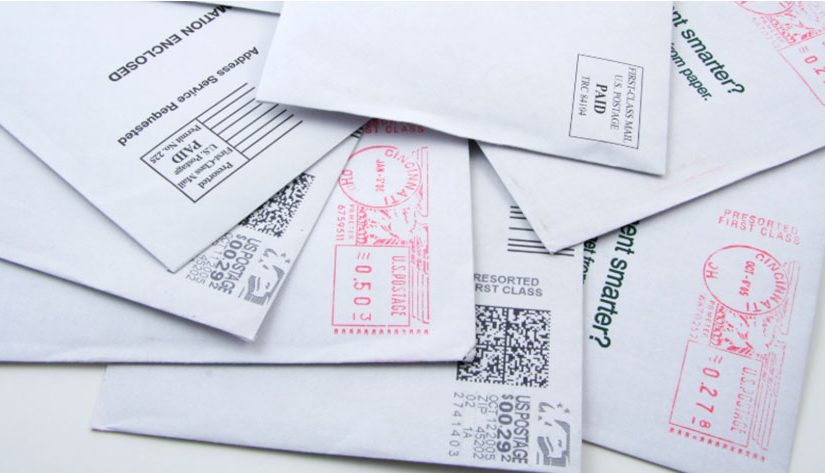The world of business mail is changing fast. Costs are climbing, volumes are shifting, and automation is redefining how mail gets created, delivered, and measured. But even with all this change, physical mail continues to be one of the most trusted and effective communication channels — especially for compliance, documentation, and customer relationships.
As 2026 approaches, this is the moment for organizations to reassess their mail strategy, tighten their workflows, and take advantage of the technology that makes mailing faster, smarter, and more resilient. For businesses using a print and mail service like LetterStream, it’s about modernizing what you send, improving how you send it, and maximizing the return on every envelope.
The Trends Defining Business Mail in 2026
The next two years will bring meaningful shifts in how companies manage mail — and the organizations that prepare early will benefit the most.
Mail volume is changing. More communication is moving to digital channels, which means the mail that is sent needs to be strategic and intentional. Think invoices, statements, compliance letters, regulatory notices — the kind of communication that matters, needs tracking, and must be delivered reliably.
At the same time, costs continue to rise (although it’s a nice surprise that in January 2026 Postage Rates won’t be rising). Paper, envelopes, transportation, postage — everything involved in producing and delivering mail has experienced steady increases. Most postal experts expect rate adjustments into 2026, so efficiency will be the key to maintaining budgets.
Technology, meanwhile, is taking center stage. Automation, data analytics, and digital-to-physical workflows aren’t just trends — they’re becoming the backbone of modern mail operations. Companies that integrate these tools (or partner with a provider like LetterStream that already has) will be able to scale faster and operate with more precision.
And finally, personalization, sustainability, and tighter targeting will define the competitive landscape. “Send smarter” is quickly replacing “send more.” Variable-data printing, print-on-demand, and hybrid delivery options allow organizations to reach the right people at the right time, without unnecessary volume or waste.
Making Sense of Cost, Volume, and Value in 2026
As we move toward 2026, the real shift isn’t about sending less mail — it’s about getting more out of every piece you send. Rising postage rates and material costs are unavoidable, but the businesses that stay ahead will be the ones that operate with tighter workflows, cleaner data, and smarter scheduling.
Efficiency becomes the lever that protects your budget. When you streamline production, keep address data accurate, and optimize timing, you reduce waste and keep cost-per-piece under control. It’s not just about delivering mail — it’s about delivering it accurately, consistently, and with full visibility.
Analytics also play a growing role. When you can see how long your mail takes to arrive, how often it gets returned, and how recipients respond to it, you gain the insight needed to refine messaging, timing, and budgeting.
And investing in automation now is one of the strongest ways to stay resilient. Modernizing your print and mail operations in 2025 ensures you enter 2026 with more control, less manual effort, and a clear understanding of how every mailing supports your business goals. With LetterStream, that preparation turns into a long-term strategic advantage.
Building a 2026-Ready Mail Strategy
A future-ready mail operation starts with clarity. Begin by auditing your current program. Review what types of mail you send — statements, invoices, marketing, compliance notices. Understand how much each category costs and which ones perform best. Evaluating your landscape helps you pinpoint where to streamline, where to invest, and where to shift to digital without losing effectiveness.
Once you understand your mix, focus on accuracy and segmentation. With rising costs, clean data matters more than ever. Update addresses, remove duplicates, and tailor communication based on recipient behavior. Stronger targeting means stronger ROI.
Timing deserves equal attention. Mail can no longer be treated as a last-minute task in your workflow. Planning cycles, staggering mailings, and monitoring performance help you avoid peak congestion, postal delays, and unnecessary expense.
And of course, automation should sit at the core of your strategy. A platform like LetterStream lets you upload files securely, choose your mail class, and track delivery through a dashboard — turning manual work into an efficient, reliable, end-to-end process.
The Future Is Hybrid
The most effective mail strategies in 2026 won’t choose between physical or digital — they’ll rely on both.
Customers now expect the physical reliability of mail combined with the immediacy of digital alerts. A mailed statement paired with an online reminder, or a Certified Mail letter tracked through a dashboard, creates a unified communication experience that strengthens trust and reduces missed messages.
This hybrid model not only improves delivery confidence — it gives businesses more ways to reach and reassure their recipients.
Planning for Rising Costs — Without Losing Efficiency
Postage and supply costs will continue to rise, so preparation is key. Consolidate vendors where possible. Explore commingling options. Consider more frequent, smaller production cycles to manage spend and avoid bottlenecks.
Data is your biggest ally. When you track delivery times, undeliverables, response rates, and cost-per-piece, you gain the information needed to justify budgets and make smarter decisions for the next cycle.
LetterStream’s platform was built around this reality — automation, where it reduces manual effort, analytics where it provides clarity, and human oversight where compliance and accuracy matter most.
The 2026 Mailroom
The mailroom of 2026 will be more strategic, more automated, and more data-driven than anything we’ve seen before. But physical mail still carries weight — especially in industries where documentation, accountability, and trust are non-negotiable.
The organizations that prepare now will enter 2026 ready to adapt, ready to optimize, and ready to turn their mail operation into a competitive advantage.
To learn more about LetterStream, click here.
LetterStream offers bulk printing and mailing services allowing companies to send physical mail online. Whether it’s online Certified Mail, First-Class Mail, FedEx 2Day, or postcards, we give both small businesses and large corporations that time and freedom back to work on tasks that better serve the company. If you’re interested in creating a free account, you can do so here.











